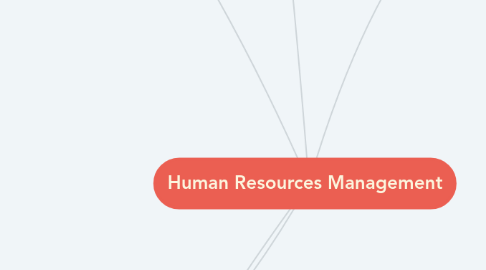
1. Coaching, Careers, and Talent Management
1.1. What is Coaching and Mentoring?
1.1.1. -Coaching Means educating, instructing, and training subordinates. Focuses on teaching shorter-term job related skills. -Mentoring Mentoring means advising, counseling, and guiding. Helping employees navigate longer-term career hazards.
1.2. What is Talent Management
1.2.1. Talent Management is the automated end-to-end process of planning, recruiting, developing, managing, and compensating employees throughout the organization.
1.3. Managing Retirements
1.3.1. Preretirement Counseling Practices 1.Explanation of Social Security benefits 2.Leisure time counseling 3.Financial and investment counseling 4.Health counseling 5.Psychological counseling 6.Counseling for second careers 7.Counseling for second careers inside 8.the company
1.4. Managing Transfers
1.4.1. Employees’ reasons for desiring transfers: -Personal enrichment and growth -More interesting jobs -Greater convenience (better hours, location) -Greater advancement possibilities
1.4.2. Employers’ reasons for transferring employees: -To vacate a position where an employee is no longer needed -To fill a position where an employee is needed -To find a better fit for an employee within the firm -To boost productivity by consolidating positions
2. JOB ANALYSIS
2.1. Information in job analysis
2.1.1. -Work activities -Human behaviors -Machines, tools, equipments and work aids -Performance standards -Job context -Human requirement
2.2. Steps in job analysis
2.2.1. -Decide how the information will be used determine the data that collected and how to collect -Review relevant background information (ex: organization charts, process charts and job description) -Select representative positions -Actually analyze the job job activities, required employee behaviors, working conditions, human traits and abilities needed -Verify the job analysis information with the worker -Develop a job description and job specification
2.3. Methods for collecting job analysis information
2.3.1. -Interview -Questionnaires -Observation -Participant diary / logs -Quantitative job analysis -Internet based
3. EMPLOYEE TESTING & SELECTION
3.1. Careful selection is important
3.1.1. 1.Reliability consistency – consistent scores 2.Validity Measuring what you intend to measure -Test validity -Criterion validity -Content validity
3.2. Testing program guidelines
3.2.1. -Use tests as supplements -Validate the test -Monitor your testing program -Keep accurate records -Use a certified psychologist -Manage test conditions -Revalidate periodically
3.3. Work samples and simulations
3.3.1. -Work sampling -Management assessment center -Situational testing and video based situational -The miniature job training and evaluation approach -Realistic job previews
4. TRAINING AND DEVELOPING EMPLOYEES
4.1. orientation
4.1.1. Provides new employees with the information they need to function ideally and help them start getting emotionally attached to the firm
4.2. Training
4.2.1. Giving new or current employees the skills they need to perform their jobs
4.2.2. Employers should Confirm the employee’s claims of skill and experience Provide adequate training Evaluate the training to ensure that it’s reducing risk Training programs are supporting firm’s strategic goal
4.3. Training process
4.3.1. TRAINING NEED ANALYSIS Identify the specific knowledge and skills the job requires and compare these with the prospective trainee’s knowledge and skills INSTRUCTIONAL DESIGN Formulate specific measurable knowledge and performance training objectives Review possible training program content Estimate a budget IMPLEMENTATION Actually training the targeted employee group EVALUATION Assess the program’s success or failures
4.4. Make the Learning Meaningful
4.4.1. -At the start of training, provide a bird’s-eye view of the material to be presented to facilitate learning. -Use a variety of familiar examples. -Organize the information so you can present it logically, and in meaningful units. -Use terms and concepts that are already familiar to trainees. -Use as many visual aids as possible. -Create a perceived need for training in the minds of the trainees.
5. Performance Management (Company’s Strategic Planning)
5.1. Does a company have any plan?
5.1.1. -Why strategic planning is important to all manager? -Organizations exist to achieve some purpose, and if they fail to achieve their ends, to that extent they have failed -Those aim or goals – and the hard work you put into accomplishing them – all depend on your company’s plan
5.2. The Planning Process
5.2.1. -Set an objective- -Make forecasts -Determine what courses of action -Evaluate alternatives -Implement and evaluate the plan
5.3. What S M A R T
5.3.1. S =Specific M=Measurable A =Attainable R =Relevant T =Timely
5.4. Management objectives grid
5.4.1. 1.Every manager needs a system for organizing how their subordinates’ goals dovetail with those of the company 2.The goals of MOG -List department managers’ supporting goals -Clarify department manager own goals should be -Summarize subordinates goals -Track subordinates’ progress
5.5. Competitive strategy
5.5.1. Identifies how to build and strengthen the business’s long term competitive position in the marketplace
5.5.1.1. Standard competitive strategy -Cost leadership -Differentiation -Focusers HUMAN RESOURCES AS A COMPETITIVE ADVANTAGE
5.6. Functional strategy
5.6.1. The broad activities that each department will pursue in order to help the business accomplish its competitive goals
5.7. Strategic HRM tools
5.7.1. Strategy Map “Big pictures” – how each department’s contributes to achieving company’s strategic goals The HR scorecard Take the strategy map and to quantify it Digital Dashboards Desktop graphs and charts
5.8. Putting together the business plan
5.8.1. 1.The MARKETING plan “the four Ps” = product, price, promotion, place 2.The PERSONNEL / HR plan The PRODUCTION/OPERATIONS plan implementing the marketing plan 3.The FINANCIAL plan the vehicle for doing so = the bottom line of planning
